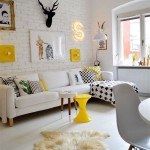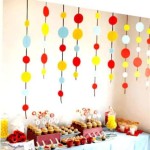```html
Korean Home Decor: A Blend of Tradition and Modernity
Korean home decor, deeply rooted in history and philosophy, has gained global recognition for its minimalist aesthetic, functionality, and emphasis on natural elements. It's a style that promotes tranquility and harmony, creating spaces that are both visually appealing and conducive to well-being. Understanding the core principles of Korean design allows for the incorporation of these elements into various interior spaces, regardless of geographical location or existing decor preferences.
The underlying philosophy behind Korean home decor stems from concepts like "Baesanimsu" (배산임수), which emphasizes the importance of a harmonious relationship between the house and its surroundings. Ideally, a home should be built with mountains behind it (protection and stability) and water in front of it (prosperity and flow). While recreating this specific configuration may not be possible in modern urban environments, the underlying principle of connecting with nature remains central. Korean design values sustainability, using natural materials and maximizing natural light to create a healthy and balanced living environment. A key component is embracing empty space, known as "Yeobaekui Mi" (여백의 미), allowing the eye to rest and promoting a sense of calm.
The Importance of Natural Materials
One of the defining characteristics of Korean home decor is the extensive use of natural materials. Wood, bamboo, paper, and stone are frequently incorporated into furniture, flooring, and decorative elements. These materials not only add texture and warmth to a space but also contribute to a connection with the natural world. Light-colored woods, such as birch and ash, are particularly popular, providing a clean and airy feel. Traditional Korean homes often feature wooden floors, paper screens ("Hanji" - 한지), and intricate wooden latticework.
Hanji, a traditional Korean paper made from mulberry bark, is used not only for screens and windows but also for lighting fixtures and decorative objects. Its translucent quality diffuses light softly, creating a warm and inviting ambiance. Bamboo, known for its strength and flexibility, is used in furniture, blinds, and decorative accents. Its natural texture adds a touch of organic elegance to any room. Stone, often used in landscaping and exterior features, can also be incorporated into interior spaces through decorative stones, tiles, or even small water features.
The use of natural materials extends beyond purely aesthetic considerations. Many of these materials are known for their environmental friendliness and durability. Wood, when sourced responsibly, is a sustainable and renewable resource. Bamboo is a fast-growing plant that requires minimal resources to cultivate. Hanji is made from natural fibers and is biodegradable. By choosing natural materials, individuals can create spaces that are not only beautiful but also environmentally responsible.
Minimalism and Functionality
Minimalism and functionality are cornerstone principles of Korean home decor. Embracing simplicity and decluttering are essential for creating a serene and harmonious living environment. The emphasis is on essential items and maximizing the usability of each space. Furniture is typically low to the ground, reflecting traditional Korean seating practices. Multifunctional furniture, such as storage benches and folding tables, is commonly used to optimize space utilization.
The "Yeobaekui Mi" philosophy plays a significant role in the minimalist aesthetic. Leaving empty spaces allows the eye to rest and avoids visual clutter. Walls are often kept bare or adorned with minimal artwork, such as calligraphy or traditional paintings. The focus is on creating a sense of openness and freedom. Clutter is minimized by utilizing storage solutions that blend seamlessly into the decor. Built-in shelves, concealed compartments, and streamlined cabinets help to keep belongings organized and out of sight.
Functionality is prioritized in every aspect of Korean design. Furniture is chosen not only for its aesthetic appeal but also for its practicality and usability. For example, a low table might serve as a dining table, a workstation, or a surface for hobbies. Sliding doors, a common feature in traditional Korean homes, are used to divide spaces flexibly, allowing for both privacy and open-plan living. The goal is to create a living environment that is both beautiful and efficient, catering to the needs of everyday life.
Color Palette and Decorative Elements
The color palette in Korean home decor typically consists of neutral tones, such as white, beige, gray, and light wood tones. These colors create a sense of calm and tranquility, providing a backdrop for accent colors and decorative elements. Earthy tones, such as terracotta, ochre, and forest green, are often used to add warmth and depth to the space. Bold colors, such as red and blue, may be used sparingly as accent colors in artwork, textiles, or accessories.
Decorative elements in Korean home decor are typically understated and meaningful. Pottery, ceramics, and handcrafted objects are often displayed as focal points. Calligraphy, traditional paintings, and embroidery add cultural significance and artistic flair. Plants, such as bamboo, bonsai trees, and orchids, are used to bring nature indoors and purify the air. Lighting is carefully considered to create a warm and inviting ambiance. Soft, diffused light is preferred over harsh, bright light. Paper lanterns, candles, and dimmable light fixtures are commonly used to create a cozy and relaxing atmosphere.
While embracing traditional elements, Korean home decor readily incorporates modern influences. Clean lines, minimalist furniture, and contemporary artwork are often combined with traditional elements to create a unique and stylish aesthetic. The key is to strike a balance between tradition and modernity, creating a space that is both authentic and contemporary. The incorporation of personal touches, such as family photos, travel souvenirs, and handmade items, allows individuals to personalize their spaces and create a home that reflects their unique personalities and lifestyles. The beauty of Korean home decor lies in its versatility and adaptability, making it a timeless and enduring style that can be embraced in any living environment.
```
My Scandinavian Home Step Inside A Relaxed Bohemian Family In South Korea

9 Korean Home Decor Trends That Will Take Centre Stage In 2025 Trending

Hdb Mnh Home Tours The Comforts Of A Korean Inspired

Korean Interior Design Inspiration Simple Living Room Minimalist

Where Function Meets Style Korean Interior Design Artsper

Top 15 Unique Home Interior S In Korea Expat Guide

9 Korean Home Decor Trends That Will Take Centre Stage In 2025 Trending

Weekender Inside Korea S Interior Design Boom Amid Pandemic

10 Affordable Ways To Achieve A Chic Korean Style Bedroom

Asian Interior Design Ideas Korean Style Inspirations From The Land Of Cranes Apartment Inspiration Condo
Related Posts







